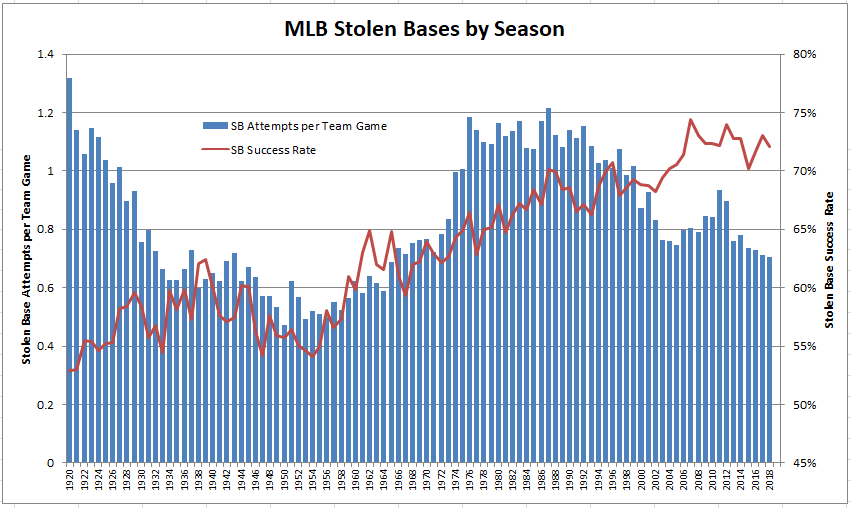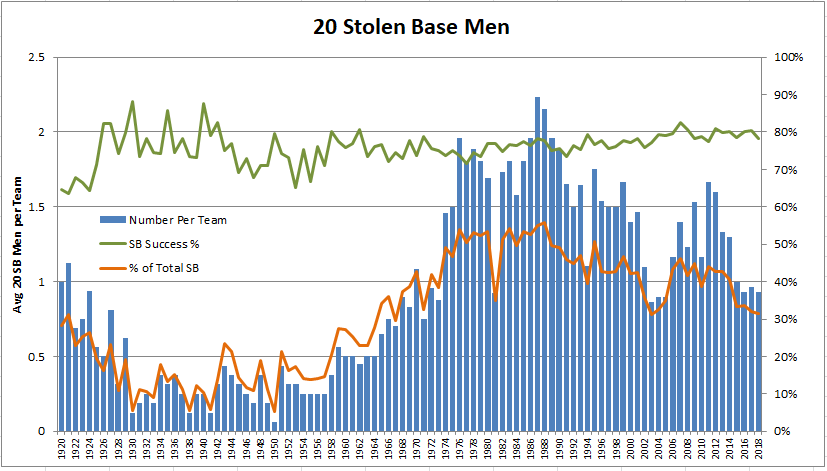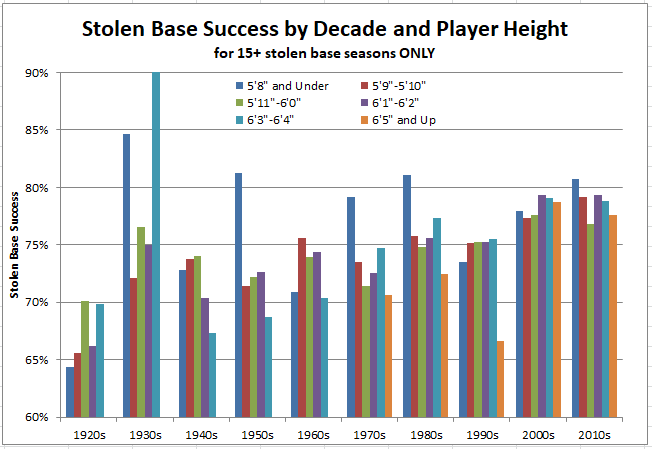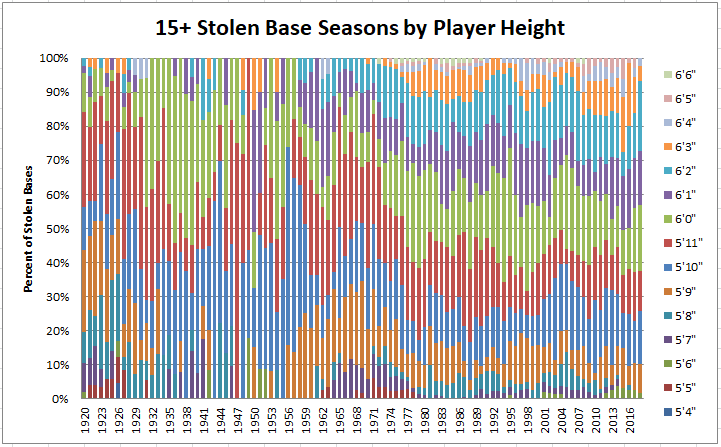With his first stolen base of this young season, Twins outfielder Byron Buxton joined elite company with his 30th consecutive theft without being caught. After the jump, more on base stealers who have been toughest to throw out.
The table below shows the players with 30 consecutive successful steals. While I believe the list is complete, it was more an art than a science to find these, so I welcome any additional streaks you may be aware of.
| Consecutive Steals | Players |
| 50 | Vince Coleman (1988-89) |
| 45 | Ichiro Suzuki (2006-07) |
| 40 | Tim Raines (1993-95) |
| 39 | Jimmy Rollins (2007-08) |
| 38 | Davey Lopes (1975) |
| 37 | Tim Raines (1983-84), Stan Javier (1996-97) |
| 36 | Max Carey (1922-23), Paul Molitor (1993-95), Brady Anderson (1994-95), Coco Crisp (2011-12) |
| 35 | Davey Lopes (1983-85), Jimmy Rollins (2001) |
| 34 | Eric Davis (1992-93), Eric Young Sr. (2000-01) |
| 33 | Kevin McReynolds (1987-89), Eric Davis (1988), Carlos Beltran (1999-2001), Byron Buxton (2017-19) |
| 32 | Willie Wilson (1980), Julio Cruz (1980-81), Tony Womack (1997), Carl Crawford (2008-09) |
| 31 | Rickey Henderson (1986-87), Carlos Beltran (2004), Nate McLouth (2008-09) |
| 30 | Eric Byrnes (2007), Jimmy Rollins (2009-10), Mike Trout (2012), Alcides Escobar (2012-14) |
An extended streak of consecutive stolen bases requires a lot of things to go right, the right pitcher and catcher, the right pitch, a good jump, good speed (though that may be the least important requirement), perhaps an evasive slide, and just plain good luck.
Max Carey is the pioneer of consecutive steals streaks, with his record total of 36 the standard for more than 50 years and never really challenged in that period. Indeed, only Lou Brock (28 steals in 1974), Frankie Frisch (27 in 1927-28) and Luis Aparicio (26 in 1957-58) threatened even the 30 consecutive steal plateau before Davey Lopes broke Carey’s record in 1975.
The list above includes some notable base stealers in their primes (Coleman, Lopes, Raines, Davis, McReynolds, Beltran, Wilson, Cruz, Womack, Crawford, Henderson, Rollins, Trout). But, there are almost as many who accomplished this feat in their thirties (Ichiro, Lopes, Raines, Carey, Molitor, Rollins, Javier, Crisp, Davis, Young, Byrnes), with Lopes and Molitor doing so late into their fourth decade. So, experience, and the guile and cunning that comes with it, can help “turn back the clock” and compensate for a lost step or two, enabling an older player to continue to steal bases successfully.
While Vince Coleman tops this list with his 50 consecutive steals, that is something of an aberration for Coleman who, despite a stellar 81% career success rate, still led his league in caught stealing three times, including in the season in which his streak began. Contrast that with Ichiro in second place who was thrown out just twice in 47 attempts in the season his streak began. McReynolds, Molitor and Alcides Escobar all have streaks spanning three seasons, including a middle year with 20+ steals and, of course, zero CS.
Mike Trout is the youngest player at age 21 to record 30 consecutive steals, and the earliest to do so in his career with his milestone steal coming in only his 138th career game. Davey Lopes is the oldest, maintaining his second 30 game streak to age 40, while Paul Molitor ran his streak until age 39, over 2200 games into his career. The longest streak to begin a career is 26 consecutive steals by Mitchell Page in 1977, while the longest to close out a career is 29 consecutive steals by Jack Perconte in 1985-86.
No doubt you will have noticed that most of these streaks have occurred in the past 30 years or so, testament to the influence of analytics in helping baserunners choose the most opportune time to attempt a steal. That trend is depicted in the chart below.

Up until the 1950s, stealing bases was barely a break-even proposition, making it a poor strategy generally with a benefit of only one base, but with the potential cost of a baserunner and an out. From the 1950s to the early 1990s, base stealing success improved steadily in tandem with the number of steal attempts. But, since then, while base stealing success has continued its rise, base stealing attempts have moved steadily lower to levels today not been seen for 50 years. This change in the correlation between base stealing success and attempts is one of the big influences of analytics, dictating that you better be as certain of success as possible before attempting to steal, more especially given the predominance of scoring via the home run.
Looking at the leading base stealers provides a bit different picture as shown below.

The chart above is showing the average number of players per team with 20 stolen bases which, like stolen base attempts, rose steadily from the 1950s to early 1990s, but has declined since then. While overall stolen base success has steadily improved since the 1920s, the improvement for these leading base stealers has been much smaller, staying mainly in the 70%-80% range since the 1930s. However, while these leading base stealers accounted for 20% or less of total stolen bases prior to the 1950s, that proportion has risen to the 30%-50% range since then. In sum, teams have gotten smarter about the players they allow to steal, concentrating base thefts among those who are best equipped to succeed in that role.


